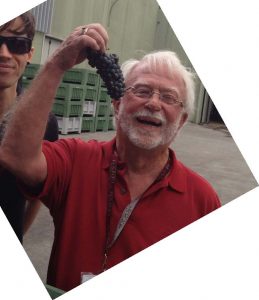Personalization is the buzzword of the 21st century. Everyone wants to feel like what they’re getting was made for them. Enter data-driven marketing. Data-driven marketing uses the information gathered from customer sales to personalize future interactions with them. The result: they feel more connected to your brand because you “know” what they like.
Using sales records from your in-store POS, mobile app and online store, you can uncover customer habits and trends that allow you to customize guest interactions, customer experience and loyalty programs. Within this data resides the “voice” of the customer which can help you grow sales in four ways.
Customized offerings
The key to restaurant success is repeat purchases. You need to get a new customer to dine at your location four times before your location joins their shortlist of places to eat. For existing customers, you want to shorten the interval between visits and you want to incentivize them to spend more when they come in.
You can accomplish this using data about who your customers are, their preferences and which items they order in conjunction with other items. For example, many customers will place similar orders each time they dine with you. Using this intelligence, you can customize menu suggestions and special offers. Additionally, you know how frequently customers visit and how much they tend to spend. This enables you to target premium customers with personalized loyalty rewards to bring them back more often. You can also lure less frequent customers with discounts on popular or new items.
Maximize customer value
Enhancing the customer experience is another way data can boost sales. If you know a customer orders the same combo meal once per week, you can target that person for a limited-time offer that encourages a second weekly visit. You can also send an upsell offer for an add-on, such as an appetizer or dessert to get them to explore new options.
Additionally, you can offer a coffee or snack to a guest who only orders kid’s meals, presuming that the paying adult might enjoy a small treat as well. Or, you can send the person a special offer, such as a family discount for dining together.
Menu Changes
With access to sales data, you know exactly what menu items sell the best, and can pair them with new or a less popular one to build interest. Getting an extra $1.50 out of your menu 125 times a day each year, adds up to almost $70,000. So take the time to analyze data to uncover opportunities. Look at meal popularity and profitability, as well as trending menu items, such as healthier choices, vegetarian and organically grown. Sales data will tell you what the most popular price point is, as well as frequently requested dietary needs and allergens to avoid in recipes.
Traffic Patterns and Staffing Adjustments
Sales data tells you what your busiest parts of the day and week are, as well as whether customers are being serviced in a timely manner, and which team members do the most upselling. These insights into average service time relative to customer demand allow you to more efficiently staff your restaurant. You may find that you can get by with a smaller staff during slow times and can sell more by scheduling your best upsellers during the busy times. Conversely, you can build data-driven marketing plans to increase traffic during quieter periods of the week. For example,you can offer a special price on products that a customer really likes during slower hours.
The true power of data emerges when it is fully integrated into your marketing plans. Using data that you already have at your fingertips, you can create personalized offers based on your customers’ previous purchase history.
About Heartland
Heartland provides entrepreneurs with software-driven technology to manage and grow their business. The company serves more than 400,000 merchants nationwide, delivering trusted solutions for payment, payroll and human resources, point of sale, customer engagement and lending. Heartland is a leading industry advocate of transparency, merchant rights and security. Heartland is a Global Payments Company (NYSE: GPN). Learn more at heartland.us.

